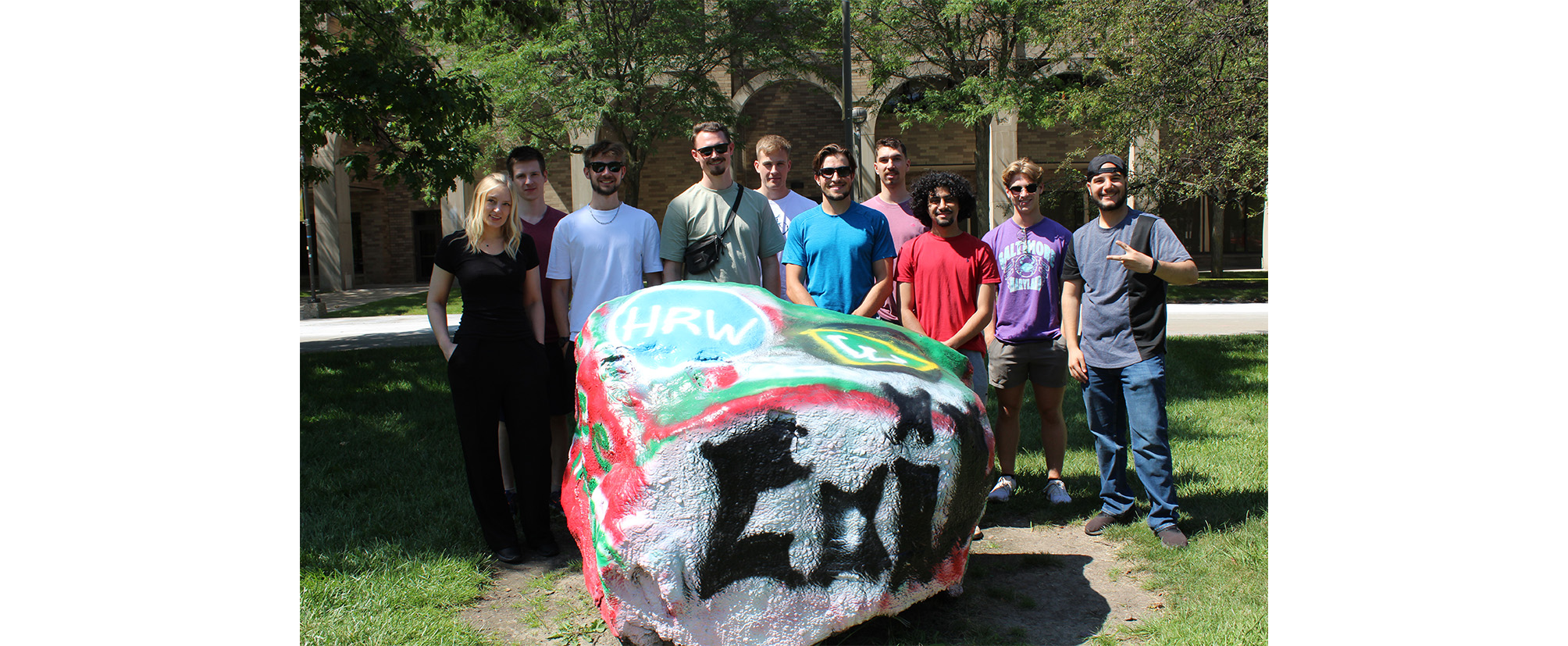COIL project successfully completed
Thursday 26 September 2024

We are pleased to announce the successful completion of the COIL project in the field of “Automotive Safety”. For the third time, students traveled with Professor Klaus Thelen and research assistant Jonas Gillner to Wayne State University in Detroit to present the final results. This year's six students came from the bachelor's degree programs in automotive electronics, electromobility and mechatronics. For the first time, Master's students from Systems Engineering were also able to take part in the joint teaching project with the American university. Interim results of the project were already presented in May at the first face-to-face meeting of the students in Mülheim.
This year's project involved the development of an automotive control unit. The particular focus was on the development of a sensor that uses radar waves to detect cyclists approaching the car. The mechanical part of the system could thus make it more difficult to open the vehicle door at the right moment, so that an accident between the cyclist and the opening door could be avoided. This system was part of a complete “Vehicle-to-Everything” (V2X) system, which includes communication between vehicles and other road users. For example, a cyclist could be warned of an opening door or a driver could be informed of nearby emergency vehicles. While the hardware in the high-frequency range was particularly challenging for the radar sensor, the difficulty with the V2X system was on the software side. Together as a team, however, the students were able to master the required tasks and thus score points at the final presentation in Detroit.
With this project, Prof. Dr. Klaus Thelen, head of the Vehicle Electronics and Electromobility course at HRW, and his American colleagues Professors Lubna Alazzawi and Mohammed Ismail simulated a typical multi-site project in the automotive industry. The various work packages of a project are distributed among international teams that work together online and offline across language and national borders. Accordingly, the students were also given the task of developing, building and testing their project in accordance with the most common vehicle standards. In order to complete the practical relevance, the device costs had to be so low that large-scale production would be possible later on.
The project came to a successful conclusion with the week-long visit to Detroit. In addition to the students and the COIL organization team, official representatives from both universities and the automotive industry were also present at the presentation. German representatives were able to join in online. The hard work of the first few days was celebrated at the end of the week with a cultural leisure program. In addition to a visit to the Skybar in the GM Building, the tallest building in Detroit, as well as a Detroit Tigers baseball game and the Ford F-150 production plant, many typical American restaurants were on the agenda. This promoted intercultural exchange and the opportunity to make international friends.
As a symbol of the growing partnership, the students painted the “Spirit Rock” of Wayne State University with logos of both universities. WSU's “Spirit Rock” is a stone on campus that can be painted again and again by different student organizations to emphasize goals or expressions. This is a sign that there are joint efforts to further expand and deepen the cooperation between HRW and WSU.
Impressions of our COIL project could be followed again this year on the institute's Instagram account @hrw_elektrisierend. There you can also find reviews of the last years of the project.
